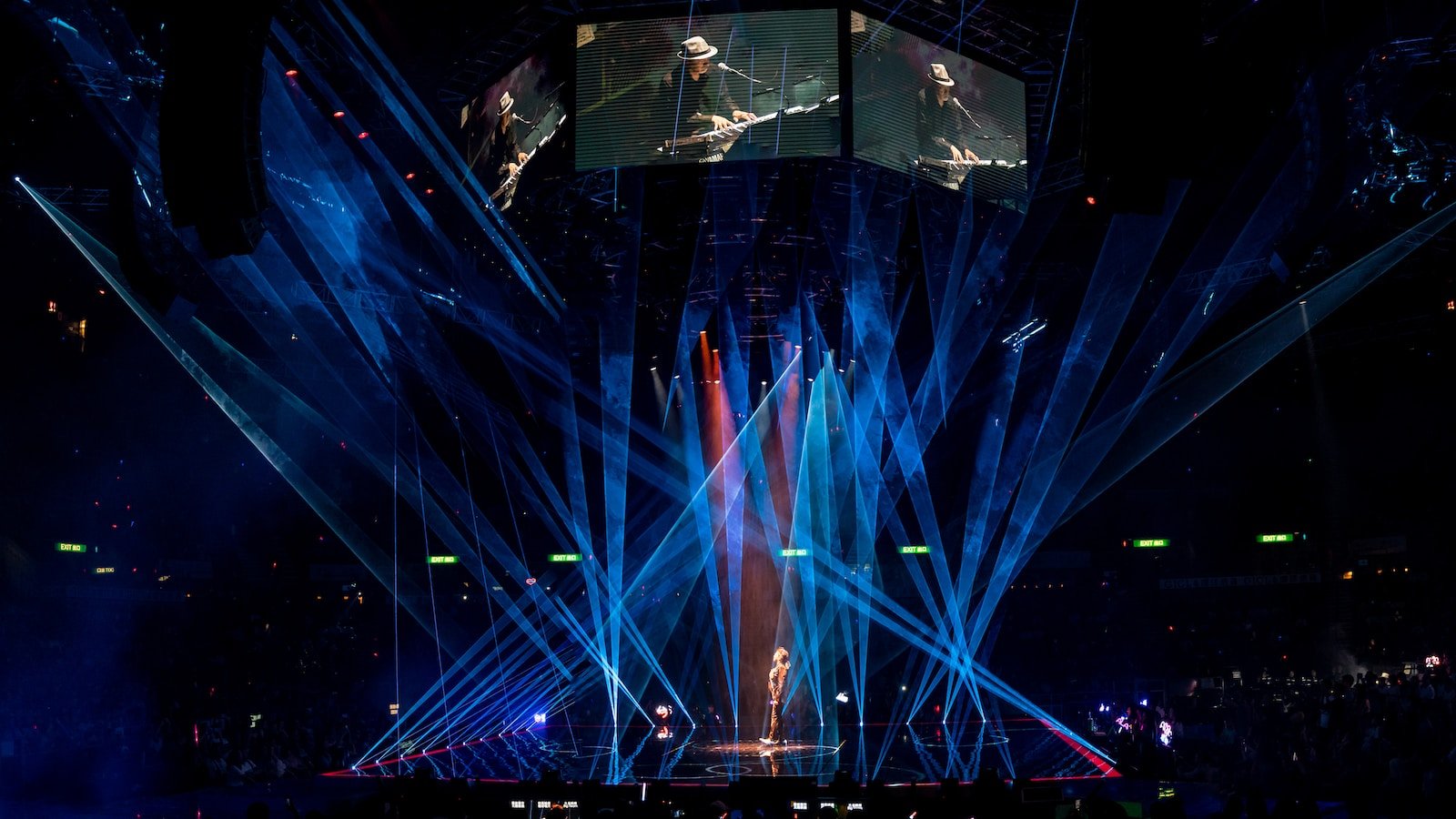Stage lighting is a crucial element in the world of theater, concerts, live performances, and other stage productions. It involves the use of lighting fixtures, control systems, and various techniques to illuminate performers, create visual effects, enhance the mood and atmosphere, and convey the narrative or artistic vision of the production.
Lighting Fixtures
Stage lighting fixtures are specially designed to withstand the demands of live performances. Some common types of fixtures used in stage lighting include:
- Ellipsoidal Reflector Spotlight (ERS) or Profile Spotlights: These fixtures produce a sharp, focused beam of light and are often used for key lighting, highlighting specific performers or objects on stage.
- Fresnel Fixtures: Fresnel fixtures provide a soft-edged, diffused beam of light and are suitable for general stage washes or creating subtle lighting effects.
- Par Cans: Par cans are versatile fixtures that produce a broad, intense beam of light. They can be used for general washes, color washes, or for lighting up scenic elements on stage.
- Moving Lights: Moving lights, such as moving heads or intelligent lights, are fixtures that can pan, tilt, and change colors or gobos (patterns) dynamically. They offer versatility in creating dynamic lighting effects and following performers’ movements.
- LED Fixtures: LED-based fixtures are becoming increasingly popular due to their energy efficiency, versatility, and color-changing capabilities. They can provide a wide range of colors, create lighting effects, and are often used for backlighting or adding accents.
Lighting Control Systems
Stage lighting control systems allow for precise control over various lighting parameters. These systems include:
- Lighting Consoles: Lighting consoles are the control hubs that enable lighting designers to program and control the lighting cues and effects. They provide a user interface to adjust intensity, color, movement, and other parameters of the lighting fixtures.
- Dimmers: Dimmers control the intensity or brightness of lighting fixtures. They allow for smooth transitions between lighting levels, creating dynamic lighting effects.
- DMX (Digital Multiplex) Protocol: DMX is a communication protocol used to control and synchronize lighting fixtures and other stage equipment. It allows for individual control over each fixture and facilitates complex lighting cues and effects.
Lighting Techniques
Stage lighting techniques are employed to create specific lighting effects, enhance the mood, and support the narrative or theme of the production. Some commonly used techniques include:
- Key Lighting: Key lighting is the primary light source that illuminates the main subject or performer on stage, providing visibility and focus.
- Fill Lighting: Fill lighting provides overall illumination on the stage, balancing the key lighting and reducing shadows. It ensures that performers and objects are visible even when not directly in the key light.
- Backlighting: Backlighting comes from behind or above the performers, separating them from the background and creating a sense of depth. It adds highlights to the edges of performers, enhancing their visibility and creating a three-dimensional effect.
- Color Washes: Color washes involve using colored lighting to bathe the stage or specific areas in a particular hue, creating a mood or enhancing the atmosphere of the scene.
- Gobos: Gobos are templates or patterns placed in front of a lighting fixture to project intricate designs, shapes, or textures onto the stage, adding visual interest and texture to the scenery.
- Special Effects: Special effects include strobes, fog machines, lasers, or moving lights that create dynamic or dramatic lighting moments, enhancing the visual impact of the performance.
Lighting Plot and Cueing
Lighting designers create lighting plots, which detail the placement and configuration of lighting fixtures, their focus, and the intended lighting effects for each scene or moment in the production. Lighting cues are programmed into the lighting console, specifying the timing and changes of the lighting during the performance.
Collaboration and Artistic Vision
Stage lighting is a collaborative process involving lighting designers, directors, set designers, and performers. Lighting designers work closely with the artistic team to understand the production’s vision and translate it into a cohesive lighting design that complements and enhances the overall performance.
Stage lighting is a powerful tool that brings performances to life, evokes emotions, sets the mood, and enhances the storytelling. It requires technical expertise, creativity, and a deep understanding of the production’s artistic goals to create a visually captivating and immersive experience for the audience.

